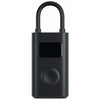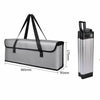Battery Care
Ensuring the safe use, charging, storage, and disposal of e-bike batteries is crucial to prevent fires and other hazards. Below is a comprehensive guide for consumers:
1. Use Only Compatible Batteries and Chargers
- Manufacturer-Approved Accessories: Always use batteries and chargers provided by or recommended by the e-bike manufacturer. Using incompatible or third-party components can lead to malfunctions or fires.
2. Safe Charging Practices
- Designated Charging Area: Charge your e-bike in a dry, well-ventilated area away from flammable materials. Avoid charging in escape routes like hallways or near exits.
- Monitor Charging: Do not charge the battery unattended or overnight. Unplug the charger once the battery is fully charged to prevent overcharging.
- Optimal Temperatures: Charge the battery at room temperature. Avoid charging at temperatures below 0°C or above 35°C, as extreme temperatures can degrade the battery cells.
3. Proper Storage Practices
- Partial Charge for Storage: If you plan to store your e-bike for an extended period, ensure the battery is charged to about 50-60%. Regularly check the charge every six months and recharge as needed to maintain this level.
- Temperature Considerations: Store the battery in a cool, dry place, avoiding extreme temperatures. Charging or storing the battery in temperatures below 0°C or above 35°C can degrade the cells.
4. Charging Habits
- Avoid Full Discharges: Regularly fully discharging your battery can be detrimental. Instead, aim to keep the charge between 30-80% during regular use.
- Use Appropriate Chargers: Always use chargers recommended by the manufacturer to prevent potential damage or safety hazards.
5. High-Risk Charging Practices to Avoid
- Using Unapproved Chargers: Avoid using chargers not specified by the manufacturer, as they may not have the necessary safety features.
- Charging in Inappropriate Locations: Do not charge your e-bike on beds, sofas, or near flammable materials.
- Overcharging: Avoid leaving the battery connected to the charger after it has reached full charge, as this can lead to overheating.
6. Risks of Modifying the Vehicle
- No Unauthorized Modifications: Do not modify your e-bike or let unqualified individuals tinker with it. Unauthorized modifications can compromise safety and may lead to fires.
7. Warning Signs Indicating Fire Risks and Preventive Actions
- Physical Damage: Do not use a battery that shows signs of swelling, overheating, or damage.
- Unusual Odors or Sounds: If you notice strange smells or noises during charging or operation, disconnect the battery and consult a professional.
8. Emergency Actions
- In Case of Fire: If the battery starts smoking or sparking, call emergency services immediately by dialing 000. Do not attempt to extinguish the fire yourself, as lithium battery fires can be hazardous.
9. Safe Storage of the Vehicle and Accompanying Products
- Proper Storage Conditions: Store the battery in a cool, dry place, away from direct sunlight or extreme temperatures.
- Avoid Environmental Exposure: Do not expose the e-bike or its components to heat or water for prolonged periods, as this can cause damage.
10. Disposal Information
- Battery Removal: If the battery can be safely separated from the e-bike, follow the manufacturer's instructions for removal.
- Proper Disposal: Batteries should never be put in your recycling or waste bin as they can cause fires in garbage trucks and waste facilities. Instead, take them to a designated battery recycling drop-off point.
- Local Recycling Programs: Participating retailers across Australia host battery recycling bins, where consumers can drop off their used batteries from bikes, as well as other household batteries.
11. Keep Battery in Use
- Regular Usage: Do not leave your battery unused or uncharged for extended periods. It's best practice to fully charge and use your battery at least once a month. Batteries left unused for months may fail to power on afterward.
By adhering to these guidelines, you can significantly reduce the risk of fires and ensure the safe use, charging, storage, and disposal of your e-bike and its components.










